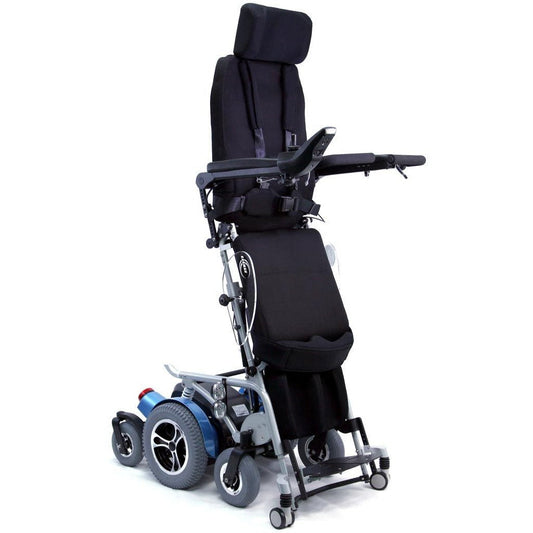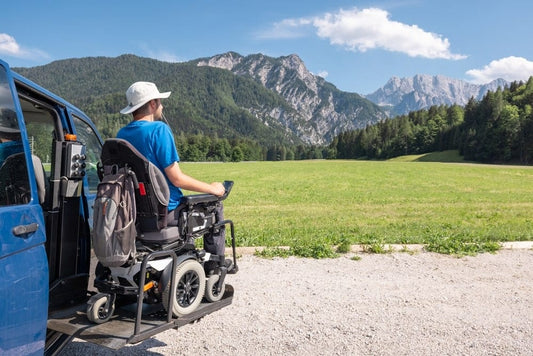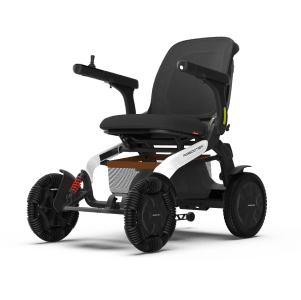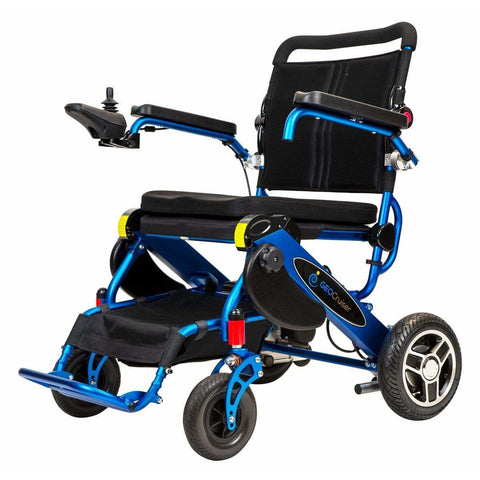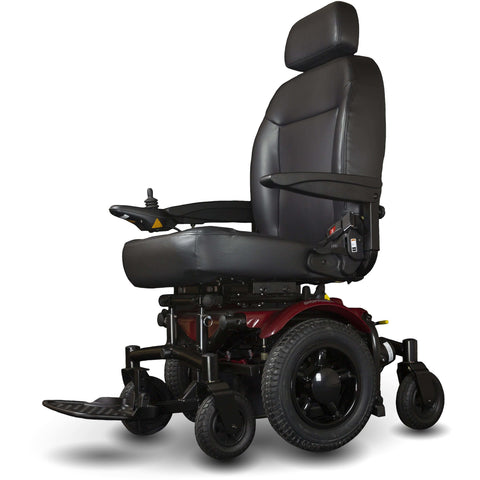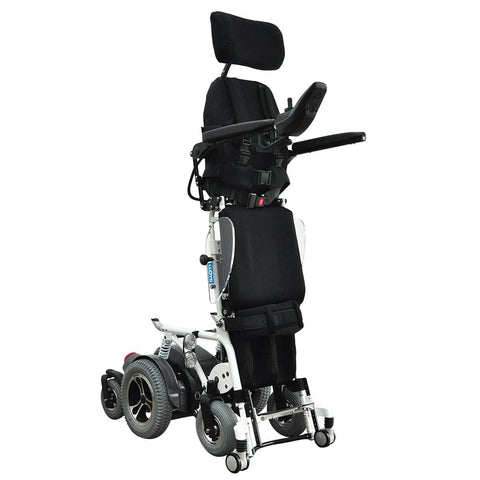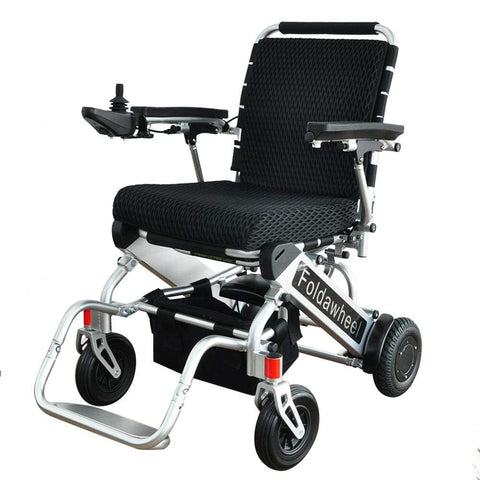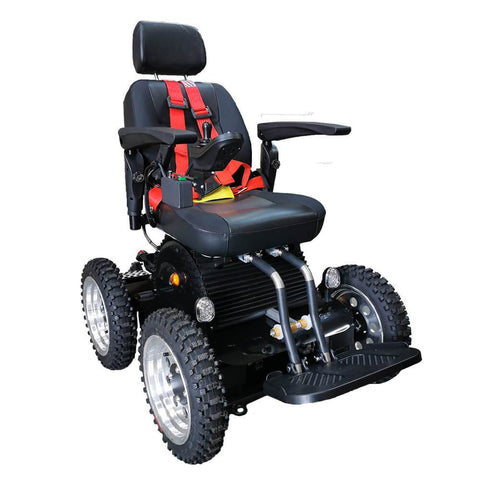Why wheelchair safety is crucial
Wheelchair safety is essential for preventing accidents and ensuring a smooth mobility experience. By prioritizing safety measures, wheelchair users can avoid injuries and maintain their independence. Regular maintenance of the wheelchair, such as checking the brakes and wheels, is crucial in preventing malfunctions. Proper positioning is also important to prevent discomfort and pressure sores. Securing personal belongings and using appropriate ramps and elevators are additional steps to ensure a safe and enjoyable wheelchair experience.

Types of wheelchairs and their features
Wheelchairs come in different types, each with its distinct features that cater to various needs. Here are some common types you may encounter:
- Manual wheelchairs: These are propelled by the user or with the assistance of a caregiver. They are lightweight and portable, making them suitable for everyday use.
- Power wheelchairs: These are electrically powered, providing more independence for users who may have limited upper body strength.
- Transport wheelchairs: Designed for easy transport and travel, these wheelchairs are often lightweight and compact.
- Reclining wheelchairs: These wheelchairs allow users to recline comfortably, providing support for those who may need to change positions frequently.
-
Sports wheelchairs: Specifically designed for athletes, these wheelchairs are lightweight, maneuverable, and offer stability during sports activities.
Understanding the different types and features can help you choose the best wheelchair that suits your specific needs and lifestyle.
Choosing the right wheelchair for enhanced safety
When selecting a wheelchair, it is crucial to prioritize safety for improved mobility. Consider the following factors to ensure you choose the right wheelchair:
- Weight Capacity: Make sure the wheelchair can support your weight to prevent accidents.
- Size and Fit: The wheelchair should fit your body comfortably to avoid strain or discomfort.
- Wheelchair Type: Choose between manual or electric based on your needs and preferences.
By selecting a wheelchair that addresses these considerations, you can enhance your safety and mobility significantly.
Proper wheelchair fitting and adjustments
Proper wheelchair fitting is crucial for your comfort and safety. A well-fitted wheelchair can prevent sores and discomfort, and also improve your mobility. Here are some key points to consider:
- Seat Width: Ensure the seat is wide enough for you to sit comfortably without feeling squeezed.
- Seat Depth: The seat depth should allow for about two or three fingers' width between the edge of the seat and the back of your knees.
- Seat Height: Your feet should rest flat on the floor or footrests with your thighs parallel to the ground.
- Backrest Height: The backrest should support your lower back without restricting movement.
- Armrest Height: Adjust the armrests so your shoulders are relaxed and your elbows are at a 90-degree angle.
These small adjustments can make a big difference in your daily comfort and mobility.
Tips for navigating different terrains safely
Navigating various terrains safely in a wheelchair is essential for your mobility. Here are some tips to help you navigate different terrains securely:
- For rough or uneven terrain, consider using wheel locks or stabilizing wheels to prevent tipping over.
- On grass or gravel surfaces, use larger wheels to improve stability and maneuverability.
- When encountering slopes or inclines, lean slightly forward to maintain balance and prevent backward tipping.
- In wet or slippery conditions, slow down, and ensure your wheelchair's brakes are in good working condition.
- Always be cautious when navigating stairs or curbs, and consider installing curb climbers or ramps for easier access.
By following these tips, you can navigate various terrains safely and improve your overall mobility in a wheelchair.
Ensuring wheelchair-friendly home environments
Make sure your home has wide doorways and hallways, around 32 inches wide, so you can move freely in your wheelchair. Place non-slip mats or rugs on the floor to prevent slipping. Install grab bars near the toilet and in the shower for added stability. Keep clutter out of the way to avoid obstacles when moving around your home. Ensure light switches and controls are within reach from a seated position.
Wheelchair maintenance for optimal safety
Regular wheelchair maintenance is essential for ensuring your safety and the longevity of your mobility aid. Here are some key tips to keep your wheelchair in top condition:
- Inspect your wheelchair regularly for any signs of wear or damage, such as loose screws, worn tires, or frayed upholstery.
- Clean your wheelchair regularly to prevent the buildup of dirt and debris, which can affect its performance.
- Check the brakes to ensure they are working properly and adjust them if necessary.
- Maintain proper tire pressure to ensure optimal performance and reduce the risk of punctures.
- Oil moving parts, such as the wheels and axles, to keep them running smoothly.
- Avoid overloading your wheelchair beyond its weight capacity to prevent damage.
- Seek professional help if you notice any significant issues with your wheelchair that you are unable to fix yourself.
Importance of regular safety checks
Before each use, it is crucial to inspect your wheelchair for any signs of wear and tear. Regular safety checks help ensure that your wheelchair is in good working condition, reducing the risk of accidents or malfunctions. Inspect the frame, wheels, brakes, and any moving parts for any damage or loose bolts to maintain optimal safety.
Safe practices for transfers and movements
Ensure to use proper body mechanics when transferring or moving individuals in wheelchairs. Always lock the wheelchair brakes before transferring or assisting with movements. Encourage the individual to assist as much as they can for a smoother transfer process. Use transfer belts or handles for extra support when necessary. Avoid sudden movements or jerks to prevent accidents or injuries during transfers. It is also essential to communicate with the individual about the transfer plan beforehand to ensure understanding and cooperation.
Summary: Enhancing mobility through wheelchair safety
Remember, staying safe in your wheelchair is crucial for getting around with ease. It's essential to ensure you're secure and comfortable while moving. Below are a few key points to help enhance your mobility through wheelchair safety:
- Properly adjust your wheelchair to fit your body for optimal comfort and control.
- Regularly check and maintain your wheelchair for any issues that may affect safety.
- Always use the wheelchair brakes when stationary to prevent accidental movement.
- Be cautious when navigating uneven surfaces or slopes to avoid tipping over.
- Consider using additional safety accessories like seat belts or anti-tip devices for added security.



